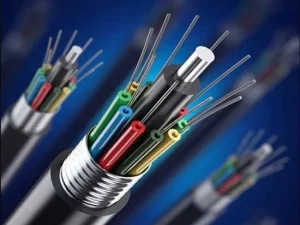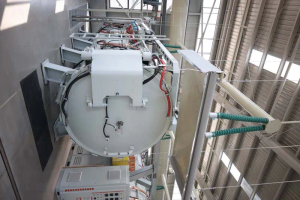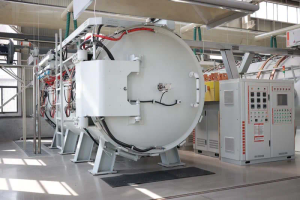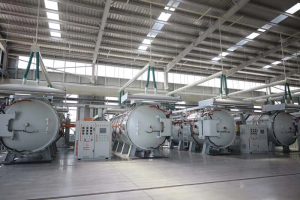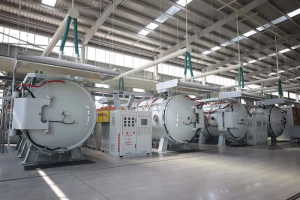The big change in the shortage of cores: the dilemma and breakthrough of domestic cores
Since the year before last, there has been a shortage of cores worldwide for more than a year. Regardless of the original factory, supplier or end product level, industries including automobiles and mobile phones are involved in this frenzy. Some enterprises have weak resistance and are swallowed up with the rising tide. Due to the scarcity of chips, the market is still in short supply, and the price of many chips has risen. Many domestic and foreign industries such as automobiles and mobile phones have stopped production or reduced production. The situation of chip shortage is entering a white-hot stage.
The lack of cores lasted for a long time, and many companies saw the shortcomings of my country’s chip manufacturing and realized the importance of independent R&D and production. Suppliers in the upper reaches of the domestic industrial chain ushered in a period of explosive performance. The enterprise began to lay out and speed up the pace of core making.
The big change in the shortage of cores: the dilemma and breakthrough of domestic cores
How difficult is Chinese chip manufacturing?
Huawei, as one of the companies severely affected by the chip shortage, has long relied on imports of chips and various mobile phone parts for many years, and is basically controlled by the United States. Recently, under the pressure of multiple policies of the United States, many chip manufacturers have been cut off from cooperation with Huawei. Huawei’s supply chain has broken, and it is facing unprecedented chip “turmoil.”
In this regard, the industry has sparked discussions: A small chip has become a problem that has not been solved for a long time in China? Why can’t China Chip go independently?
1. Early start, but slow development progress
In fact, it is not too late for China’s chip manufacturing to start. As early as 1956, in my country’s “Twelve Years” long-term plan for scientific and technological development, semiconductor science and technology was listed as one of the four major national emergency measures for new technologies. It can be seen that my country had already started semiconductor development planning at that time, which was a few years earlier than Japan and other countries. But in the following time, our country did not grasp the development very well, and began to stagnate in the middle, while other countries were at the peak of development at this time, and China had been overtaken unknowingly. The development of chips is not achieved overnight. It is still difficult for Chinese chips to stand shoulder to shoulder with foreign companies in a short period of time.
2. Raw material manufacturing capacity is relatively scarce
As we all know, the raw material of chips is silicon. Silicon is extracted from sand. Although sand can be found everywhere, the technology to extract silicon from sand is indeed a big problem. The silicon extraction process has strict requirements on precision, its purity cannot be lower than 99.99999%, and the corresponding technical requirements are also high. In terms of the production capacity of raw material monocrystalline silicon wafers, there are still not many well-known companies in the world, and there are even fewer in China. Silicon (SiO) is known as the foundation of the semiconductor equipment industry chain, and semiconductor raw materials are the cornerstone of the industry. Without the support of manufacturing technology for raw materials, basic supply is a problem, let alone the need for breakthroughs and innovations.
3. Design software and technology are limited by foreign countries
From the perspective of design software, my country’s EDA software development is still insufficient. The world’s three famous EDA software companies are Synopsys, Cadence and MentorGraphics under Siemens in the United States. The three giants have almost monopolized more than 90% of the global EDA market share.
The algorithms in the design technology are complicated and involve many disciplines, and most of the patents are also in the hands of foreign companies. Restricted by foreign policies, many design technologies cannot be used. The chip design and manufacturing process is very complicated, and foreign companies have spent a long period of time, years or even decades. In a short period of time, from the implementation and use of technology to the investment of time, there are great difficulties.
4. Manufacturing of important equipment is limited
As one of the important equipment for chip manufacturing, the lithography machine has an 80% share in the lithography machine market in the Netherlands, and the parts come from dozens of countries, including Zeiss lens equipment from Germany and special equipment from Japan. Composite materials, Swedish industrial precision machine tools, etc. The manufacturing design of lithography machines involves the global supply chain system, which brings together high-end technologies from all over the world. At present, the supply of materials for lithography machines in my country is blocked, and it will take time to realize the self-supply of lithography machines.
“Core” opportunities to promote the development of China’s “chip”
Although the lack of cores this time has brought many challenges, only by facing up to its own shortcomings and actively making adjustments can sustainable development be achieved. In 2020, there will be 22,800 newly registered chip-related companies in my country, a year-on-year increase of 195%. Recently, the latest data show that my country’s chip self-sufficiency rate is 30% in 2019, and it is planned to increase the self-sufficiency rate to 40% this year. It has set a target of 70% chip self-sufficiency rate by 2025. In order to better promote the development of my country’s semiconductor industry, various regions have launched a A series of supporting policies for the semiconductor industry. China’s chip industry is standing on the new frontier of development, and the upsurge of domestic core manufacturing has hit. The big change in the shortage of cores: the dilemma and breakthrough of domestic cores . industrial tft display
https://oaicon.com/index.php/2023/03/10/the-big-change-in-the-shortage-of-cores-the-dilemma-and-breakthrough-of-domestic-cores/
Summarize
Under the background of chip shortage, domestic enterprises are actively carrying out chip research and development, and the production capacity and sales of chip manufacturers all over the country have increased; good news has also been heard in the development of new technologies and new products. This is a good start, indicating that the chip industry will be reshuffled, and China’s chips will gradually become independent. Although there are still many storms on the way forward, I believe that in the global chip market, Chinese chips have a promising future.

